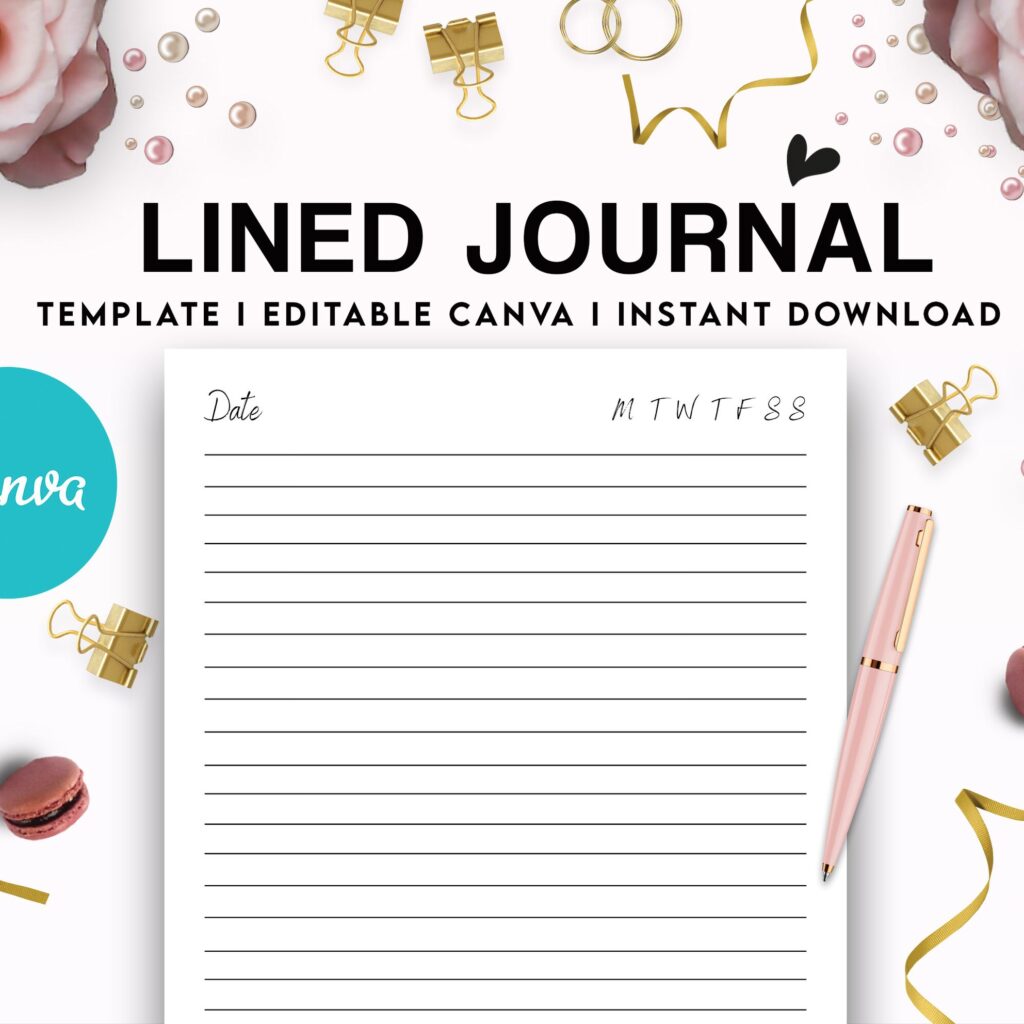Subtotal: $0.00
Amazon KDP guide
How to Sell Journals on Amazon: A Comprehensive Guide
If you’re an aspiring author, coach, or entrepreneur looking to make extra money, learning how to sell journals on Amazon can be a great way to do it.
This can be a profitable business if you know how to market your products properly and understand the nuances of Amazon’s algorithms.
In this guide, we’ll cover everything from getting started to crafting the perfect cover. Get ready to turn your journaling hobby into a side hustle!
Choose Journal Type for Your Audience
Choosing the right journal type for your audience is an important part of expressing yourself and engaging in meaningful reflection. Depending on what you want to focus on, there are a variety of journal types to choose from.
- Blank-lined journals are great for writing out your thoughts and ideas without guidance or prompts.
- Guided journals are ideal for those looking for a bit more direction, with prompts to help you focus and record your reflections.
- Gratitude journals are excellent for fostering a mindset of appreciation and thankfulness, prompting you to write down the things that you are grateful for.
Other than this broad categorization, there are a few other types to keep in mind:
| Activity Books | Memory Books |
| Agendas | Notebooks |
| Calendars | Notepads |
| Coloring Books | Planners |
| Composition Books | Prayer Books |
| Diaries | Puzzle Books |
| Guest Books/Registers | Study Guides |
| Journals | Trackers |
| Log Books | Workbooks |
No matter what type of journal you choose, exploring the options at hand, and prioritizing your audience’s preferences is a must!
Identify Your Target Audience
When learning how to create a journal to sell on Amazon, the first step is conducting market research and knowing who your target audience is.
Defining their persona involves considering their interests, needs, and demographics.
This will help you create a product that is tailored to their needs and will be more likely to engage them in the process.
Tools for Creating Journals
Creating and selling journals on Amazon KDP requires a few key tools and resources:
Word processing software such as Microsoft Word is essential for writing and formatting the content of the journal.
If you wish to design original covers, logos, or illustrations, design software like Adobe Photoshop or Illustrator is recommended.
Additionally, you will need to format the final product with tools such as Kindle Create which can help you get your eBook ready for sale on Amazon’s Kindle store.
Finally, it is important to have a good understanding of Amazon’s policies and procedures in order to effectively set up your journal for sale. So keep these necessary tools and resources in mind!
Creating a Blank Lined Journal Using Microsoft Word
Here’s a step-by-step guide on creating a blank-lined journal using Microsoft Word:
- Launch Word on your computer and adjust margins to 0.5″.
- Go to the Insert tab and click on the Shapes drop-down arrow, selecting the “line” shape.
- Draw a straight line from left to right by holding the Shift key while clicking and dragging the line.
- Adjust the length and width of the line using the options in the Format tab.
- Center the line by clicking on the Align drop-down arrow and selecting “Align Center.”
- Copy and paste the line to create additional lines for your notebook page, creating around 20 lines in total.
- Select all the lines, align them to the left using the align settings in the Format tab, and distribute them vertically.
- Move the bottom line above the bottom margin and align it accordingly.
- Duplicate your journal page until you have the desired number of pages.
- Save your manuscript as a PDF, and enjoy your newly-made journal!
In order to ensure consistency, establish a harmonious visual hierarchy and use the same style elements (such as fonts, colors, sizes, and spacing) throughout all pages.
Designing Journal Pages with Microsoft PowerPoint
An alternative method for creating journal pages is using Microsoft PowerPoint ‘slide master’ feature. This allows users to create a unified look for all of the slides in their presentation.
Users can customize the background, font size, color, add graphics, and insert text boxes with the desired content.
Here’s a step-by-step guide for all the details you will need:
- Launch PowerPoint and set the slide layout to “blank.”
- Access the Design tab and click on Page Setup to define the page size (e.g., 6×9, 8×10, 8.5×11).
- Embed fonts in the file to ensure consistency: File > PowerPoint Options > Save > Embed Fonts > OK.
- Set margins to 0.5″ by right-clicking on the main slide, selecting “Grid and Guides,” and enabling “Display drawing guides on screen.”
- Set the guidelines as your margins by dragging them while holding the Ctrl key.
- Go to the Insert tab, choose the Line shape, and draw a straight line from left to right while holding the Shift key.
- Adjust the line’s length and width using the options in the Format tab.
- Center the line by selecting “Align Center” from the Align drop-down menu.
- Copy and paste it to create additional lines for your notebook page (around 20 lines recommended).
- Select all the lines, align them to the left using the align settings in the Format tab, and distribute them vertically.
- Customize the color if desired.
- To create multiple more, duplicate the journal page.
- Save your design as a PDF: File > Save As > PDF.
By following these steps, you can easily design and format your own notebook pages using PowerPoint!
Establishing Guidelines in PowerPoint
Consistent design and layout across journal pages are essential for creating a cohesive and professional look.
This way, designers can ensure that their product looks consistent from page to page, creating an aesthetically pleasing and practical experience for users.
Crafting Eye-Catching Journal Covers
Journal covers are essential to draw in potential buyers, as they can help identify them at a glance and entice them to pick one up.
A great cover should be visually striking and accurately reflect the content and purpose of the journal.
It should be well designed, with the title prominently featured on the cover, along with a catchy tagline, if chosen.
The colors, fonts, and imagery used should be carefully chosen to capture its energy and spirit.
Here’s some guidance on how to design yours:
- Define your concept and gather inspiration.
- Choose the right software for design, which we will detail in the resources below.
- Set up the canvas with appropriate dimensions.
- Incorporate imagery, typography, and a harmonious color palette.
- Pay attention to balance, composition, and refine the design before exporting.

Exciting Resources for Stunning Journal Covers
Finding the right resources to create your journal covers can seem daunting, so here’s a list of tools (free and paid) to make it easier:
- Canva
- Google Fonts
- Unsplash
- Pixabay
- Freepik
- Creative Market
- PicMonkey
- Adobe photoshop
- KDP Cover creator
Cover Creation: Designing Covers in Batches
Designing journal covers in batches can greatly streamline the publishing process, saving time and effort. This way, you can establish a consistent visual theme across your designs, therefore enhancing brand recognition.
To efficiently manage this workflow, it’s essential to stay organized. Consider setting up dedicated folders for each cover design, labeling files clearly, and keeping track of progress.
Additionally, leverage tools and techniques to automate repetitive tasks. Make the best of design software features like templates, master slides, or batch processing to achieve the best results.
By adopting a systematic approach and implementing these automation tools, you can enhance efficiency and productivity to kickstart your journal business!
Conclusion
To sell journals on Amazon, it is crucial to choose the right type for your target audience, utilize efficient workflow management techniques, and design captivating covers.
In this article, we hope we’ve provided you with guidance in all these areas, enabling you to kickstart a journal business and enhancing your chances of success among competitors!

 Editable Canva Lined Journal: Express Your Thoughts - KDP Template
Editable Canva Lined Journal: Express Your Thoughts - KDP Template 
DISCOVER OUR FREE BEST SELLING PRODUCTS
Editable Canva Lined Journal: Express Your Thoughts – KDP Template
Lined Pages Journal 120 pages Ready to Upload PDF Commercial Use KDP Template 6×9 8.5×11 5×8 for Notebooks, Diaries, Low Content
Lined Pages Journal 120 pages Ready to Upload PDF Commercial Use KDP Template 6×9 8.5×11 5×8 for Notebooks, Diaries, Low Content
Cute Dogs Coloring Book for Kids | Activity Book | KDP Ready-To-Upload
Daily Planner Diary : Diary Planners for Everyday Productivity, 120 pages, 6×9 Size | Amazon KDP Interior
Wolf Coloring KDP interior For Adults, Used as Low Content Book, PDF Template Ready To Upload COMMERCIAL Use 8.5×11"
Coloring Animals Head Book for Kids, Perfect for ages 2-4, 4-8 | 8.5×11 PDF
Printable Blank Comic Book Pages PDF : Create Your Own Comics – 3 Available Sizes
Notes KDP interior Ready To Upload, Sizes 8.5×11 6×9 5×8 inch PDF FILE Used as Amazon KDP Paperback Low Content Book, journal, Notebook, Planner, COMMERCIAL Use
Black Lined Journal: 120 Pages of Black Lined Paper Perfect for Journaling, KDP Notebook Template – 6×9
Student Planner Journal 120 pages Ready to Upload PDF Commercial Use KDP Template 6×9" 8.5×11" for Low Content book
Recipe Journal Template – Editable Recipe Book Template, 120 Pages – Amazon KDP Interior